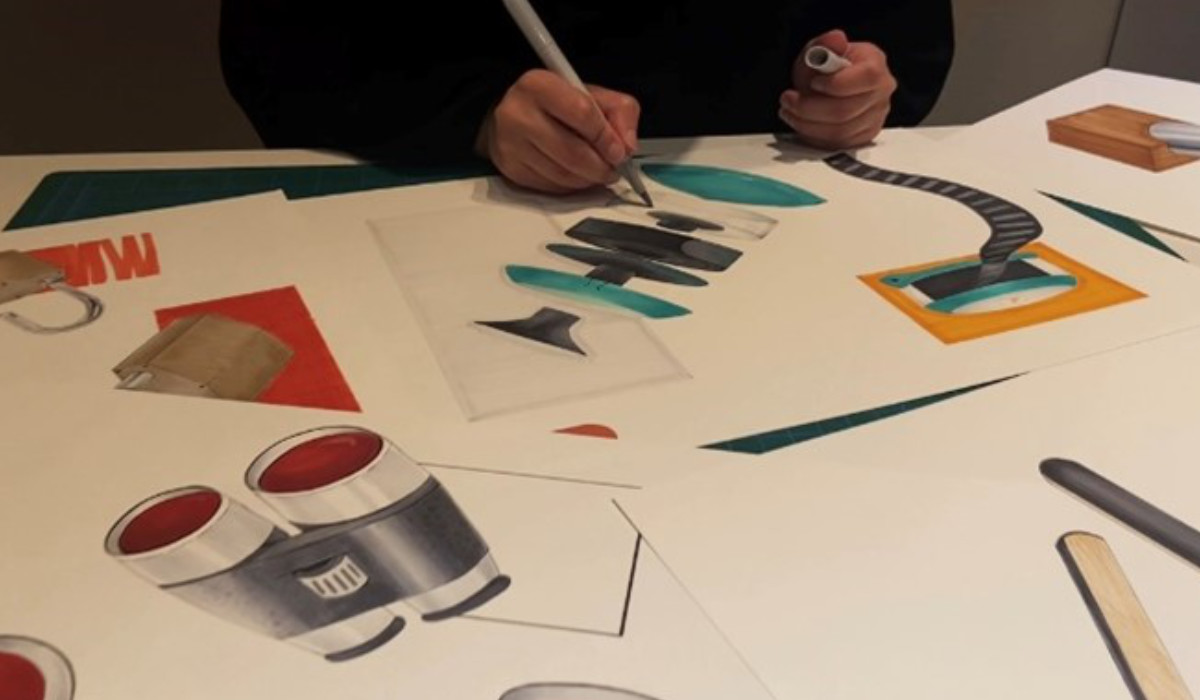RIYADH: Curiosity was her guide, creatively unveiling the hidden wonders in the ordinary, and product designer Lamees Alfadhel designed Qitmeer, a machine that produces vegan leather sheets using damaged and wasted dates.
Qitmeer was the young designer’s graduation project. Fascinated by science, creativity, and the ability to shape human interaction with the world, Alfadhel explored several academic paths before discovering her passion and purpose in product design.
“While I may not have realized it immediately after high school, I soon discovered that product design brings together a captivating mix of different disciplines, allowing me to combine my interests and create innovative solutions,” said Alfadhel, a first-class honors product design graduate from Princess Nourah bint Abdulrahman University.

Lamees Alfadhel worked on several projects, her first project was an interactive game with topic-based cards, designed to encourage teamwork and engaging conversations. (Supplied)
Alfadhel’s interest in culture, sustainability, and building a greener future through design sparked the young designer to base her graduation research in the natural leather industry in the Kingdom.
“I find inspiration in cultural designs that incorporate elements of my country, such as the iconic date palm trees,” she said.
She found two main challenges facing the natural leather industry in the Kingdom: the chemical damage resulting from the leather processes and the massive amount of wasted dates.
I’m looking forward to producing the most unique leather sheets in the industry. Sustainabilityisacore value guiding my work, dedicated to building a greener future through design.
Lamees Alfadhel, Product designer
“These challenges inspired me to design a machine that combines a solution for both issues,” said Alfadhel.
The vegan leather-making machine Qitmeer works by grinding the dates, mixing them with additives, then pouring them into molds to start the first half of the drying process before preparing them for the finishing and coloring processes.
The vegan leather sheets then become ready for the manufacturing and production operation, which includes the making of leather clothing and accessories.
Fibers are an essential part of the vegan synthetic leather-making process, and dates are the optimal choice for this industry, considering that they have a high fiber content.
“I’m looking forward to producing the most unique leather sheets in the industry. Sustainability is a core value guiding my work, dedicated to building a greener future through design,” said Alfadhel.
Qitmeer has been positively received by people. It encourages others to use elements and sources available in the Kingdom, explained Alfadhel.
Today, young creatives, including Alfadhel, have the opportunity to make their mark on the national and global art and design scene, with the Kingdom’s cultural renaissance supporting and inspiring a new generation, a key part of Saudi Arabia’s visionary economic and social plan to build a creative economy.
“The design community in the Kingdom has witnessed significant growth and recognition in recent years,” said Alfadhel.
“There are numerous initiatives, organizations, and government-backed programs that actively promote and support designers across various disciplines.”
Alfadhel has worked on several projects and her first was an interactive game with topic-based cards, designed to encourage teamwork.
She added: “Among the projects I’ve worked on, I take great pride in highlighting Qitmeer as my most significant achievement so far.”
Qitmeer was selected and featured in Tanween’s “Graduation Exhibition” at Ithra last November. The exhibition highlights the most outstanding work by graduates of design and architecture colleges and universities in the Arab world.
Alfadhel mostly uses Adobe Creative Cloud, Illustrator, and Photoshop for her designs. When sketching the initial idea, and 3D modeling, she uses the Fusion 360 platform.
“Fusion 360 is a fundamental part of my creative process, allowing me to bring ideas to life and refine them with attention to detail,” she said.
“Lately I’ve realized that the most used color in my designs is green, but that relies on the purpose of the product I design. Searching to understand the meaning of colors is an important step of my design process.”
The world has witnessed influential product designers who have set new standards in place, leaving a mark behind, and Alfadhel’s passion for design and unwavering commitment and determination to contribute to the design industry mark her out as a possible addition to the growing list.
She is currently working as a graphic designer and a marketing specialist in Riyadh and aspires to collaborate with local talents to foster the growth and development of young Saudi creatives in the Kingdom.



























